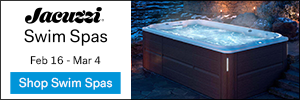Are you a new hot tub owner looking to master your spa water care routine?
Or maybe, you’re a seasoned owner who’s recently begun struggling with cloudy, unappealing water and needs to re-evaluate your process.
Whatever the case, you’ve come to the right place!
Below, we’re going to give you an easy four-step routine to maximize your water care, and keep your water looking (and feeling) its best!
Stick around until the end to learn how to properly add your hot tub chemicals to your water, and discover some easy ways to take your spa water care even further.
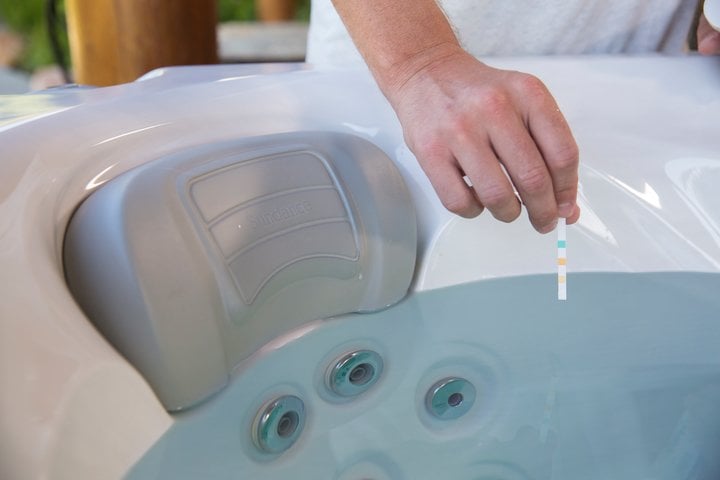
4 Steps for Expert Spa Water Care
There’s no wasting time when you’re struggling with your water quality or are preparing for your new spa, so we’re going to jump right into the four basic steps to keep your water clean.
These steps can both help you troubleshoot your dirty water, and ensure you’re able to easily maintain it once it’s clean again.
No matter the reason you’re here, these steps can help you find the balance you need.
Step 1: Test and Balance Your Water
Before you start adding in your treatment products, you need to get a reading of your water’s current chemistry.
Clean water is a balancing act and requires careful care to stay clear, safe, and enjoyable.
The first step in your care routine will be to test your water with a pH test strip. You’ll want to do this three times a week to track any changes to your water chemistry and respond to them quickly.
These strips will give you information on three main aspects of your water chemistry:
- pH levels
- Alkalinity
- Sanitizer levels
These are the most important aspects of your water chemistry and are responsible for ensuring your water doesn’t become too acidic or basic, and is able to effectively combat bacteria.
Pro tip: Before testing your water, let your jets run for a few minutes to equally disperse any products in your water so you get an accurate reading.
Step 2: Add Your Chemicals
After you’ve tested your water, you’re ready to start adding your chemicals!
pH and Alkalinity
Your first goal is to bring your water into balance using pH and alkalinity treatment products, such as:
- Alkalinity increaser
- pH increaser
- pH decreaser
Starting with your alkalinity, determine if you need to add any alkalinity increaser. If, on the off chance, your alkalinity is too high, you’ll need to use your pH decreaser to bring it down.
You’ll want your alkalinity to stay between 80 ppm and 120 ppm.
After you’ve added your alkalinity treatment, you can shift your focus to your pH. This level should be between 7.2 and 7.8.
Based on the pH level shown on your test strip, add the appropriate amount of pH increaser or decreaser to bring it within the appropriate range.
Sanitizer
Now that you’ve balanced your water, it’s time to start fighting off the bacteria that’s in your water.
Unlike bathtubs, your hot tub water sits in the basin of your spa for extended periods of time and experiences frequent use, which all adds up to an increase in bacteria.
Without bacteria being broken down, you can end up with cloudy, foamy, or foul-smelling water.
What’s worse, your water would no longer be safe to soak in!
Your sanitizer strictly works to kill the bacteria in your water to provide a safe environment for you and your guests, so it’s non-negotiable in your routine.
The most popular sanitizer is chlorine, with bromine being the next most common.
If you’re using chlorine, you’ll want to maintain a level of 1-3 ppm, or 3-5 ppm if you’ve decided to use bromine.
Hot Tub Shock
Next up; shock!
Essentially, shock is a super dose of your sanitizer, and its only goal is to support your main sanitizer by quickly killing the bulk of bacteria in your water.
One of the best shock options is an oxidizing shock treatment, which is able to kill the contaminants in your water that your sanitizer simply can’t, like oils and organic matter.
Ideally, you’ll want to shock your water once a week, so it’s an easy element to include in your routine.
Optional Spa Water Care Products
A highly influential aspect of how you need to treat your water is the quality of your local water.
This can make it necessary to add some additional products into your routine to make it easier to maintain the basic aspects of your water.
Calcium Hardness Increaser
If you live somewhere with soft water, adding a calcium hardness increaser to your water after a water change can help make it easier to re-balance your water.
All water has some level of minerals in it, and while hard water has a higher level of these minerals, soft water has much less.
While water that’s overloaded with calcium can result in hard scale building up on your shell, jets, and heating element, water without enough calcium can result in corrosion to those elements.
Ideally, you want your calcium hardness to be between 150 and 250 ppm.
To find out the calcium hardness of your water, you can either use test strips that include calcium hardness, or bring a sample of your water to your hot tub dealer or supply store.
Enzymes
Enzymes are another product that can help break down organic matter, and can be beneficial in keeping your water clean during those times when it sees more frequent use.
There’s no avoiding organic matter in your spa, and it often comes from:
- Dead skin cells
- Detergent on your swimsuit
- Body lotion
- Cosmetics
- Hair products
- Deodorant
If you use your hot tub frequently or simply want to help support your sanitizer, enzymes are a great addition to your spa water care.
Clarifiers
Clarifiers help to clear up cloudy or foamy water quickly, but they’re a “good to have,” not a necessity.
Clarifiers don’t solve dirty water, they’re simply a temporary bandaid, and your cloudy water will inevitably return in the near future without proper treatment.
This may have you wondering why people would use clarifiers if they don’t fix the issue, and this all comes down to one thing…last-minute demands!
If you’re throwing a hot tub party and wake up to cloudy water on the morning of, a clarifier is a great way to keep your party on the books, without needing to cancel while you diagnose the cause.
Step 3: Clean Your Filters Regularly
Your filters act as the barrier between contaminants and your water, blocking them from circulating back into your tub.
With all that work, it’s no surprise they need some care to stay clean and working properly.
You should be cleaning your filters at least once a week, simply rinsing them off under the tap to wash away any debris that’s collected on the pleats.
For a deeper clean, spray them with filter cleaner, or soak them in a diluted mixture of filter cleaner and water for 15 minutes before rinsing them off.
This can keep them working effectively, while also maximizing the energy efficiency of your hot tub by keeping your circulation system functioning properly.
Step 4: Include a Quarterly Deep Clean
Last on the list is something you’ll only need to do four times a year. A deep clean helps you reset your hot tub, ensuring you’re enjoying fresh water on a regular basis.
Not only does this protect you from soaking in water with extreme TDS (total dissolved solids) levels, but it also minimizes the risk of damage to your entire hot tub system.
Once a season, set aside some time to fully drain your hot tub and clean your shell and jets.
After you’ve finished cleaning everything off, simply rinse it down to wash away any lingering residue, then toss in the garden hose and let it refill with fresh water.
Lastly, test and treat your water to rebalance it!
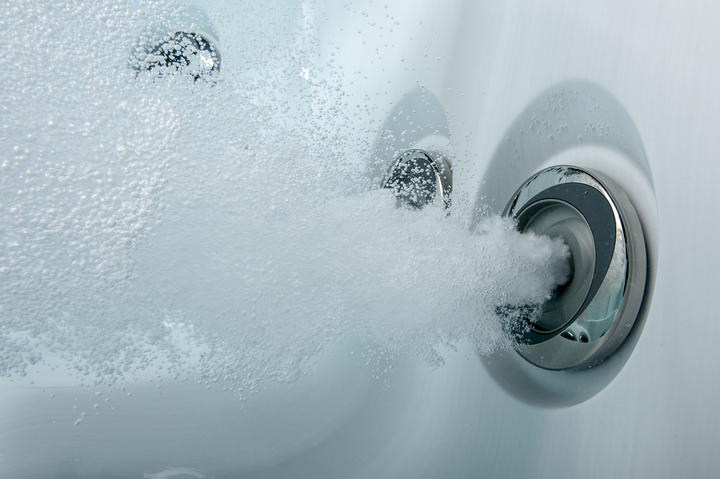
How to Add Hot Tub Chemicals to Your Water
Knowing the products you need to include in your spa water care routine is only the beginning.
You also need to know how to add them! But don’t worry, it’s a fairly simple process that can quickly become second nature.
Keep The Jets Running on Low
As you add your treatment products, they need to be mixed into the water, and what better way to do this than by letting your jets do the work?
Keeping your jets on low as you treat your water will ensure any product you add will be equally dispersed through your system, leaving you with evenly treated water.
Measure Your Chemicals
When it comes to adding your chemicals, precision is key.
There’s no taking them out once you’ve poured them in, and if you over-treat, you’ll be left waiting for them to evaporate over the next day or two.
We recommend measuring your products twice before adding them to your water, ensuring you’re adding in the exact amount needed based on the results on your pH test strips.
Above all, carefully follow the directions listed on each of your water treatment products.
Add Them to The Water
Once you’ve measured each product, slowly add them to the water and give them time to mix in.
You’ll want to leave your system running for the next half hour to ensure all products have been properly dispersed and have fully dissolved if you’re using granules.
Leave The Cover Off
This is a crucial element to keep in mind. Anytime you add chemicals to your water, you want to leave your cover off for 20 minutes before closing it.
This allows the chemicals to off-gas properly. If you close the cover, this gas is trapped between your cover and the water, leading to higher chemical levels than anticipated.
Additional Spa Water Care Steps
After treating your water, there are some additional steps that you should include to keep your water clean and clear.
These steps work to reduce the work your chemicals need to do to maintain your water quality, and keep your spa looking pristine every time you lift the cover.
Wipe The Edge of Your Spa
During one of your luxurious soaks, you may have noticed a small line of scum hovering just above your waterline.
This is a natural occurrence, especially when your hot tub is seeing heavy use and is exposed to a higher amount of organic matter.
Avoiding this is as simple as wiping down the exposed edge of your spa, quickly clearing up any oils and debris that may have begun to build up.
Use Spa Sponges
Speaking of oils, to make your spa water care even easier, toss in some spa songs or tennis balls after you’ve finished your session.
As they float along the water, they’ll absorb the oils that may have been pulled off your skin and are now floating on the surface of the water.
While they certainly won’t remove all the organic matter, they can make a significant difference in the amount of contaminants in your water after each soak.
Shower Before You Soak
If you want to be proactive about your water care, quickly rinsing off before jumping into the water is a great option!
This will help wash away any contaminants you could bring into your water, minimizing the work your filters and treatment products need to do.
Spa Water Care Products in Toms River, Oakhurst, & Manalapan
Congratulations, you’ve just become a master of spa water care!
There’s nothing more rewarding than knowing you’re tackling the care of your spa with confidence and skill.
At Hot Tub Central, our team of experts is here to help support you through the process, whether it’s finding the right water treatment products or providing advice and guidance when issues arise.
Contact us today if you’re having trouble with your water care, or schedule a hot tub service appointment, and our trained technicians will get your hot tub back up and running in no time!
/brands/jacuzzi-hot-tubs/j400/j-435/j-435-top-view.png)

/brands/sundance-spas/880-series/altamar/altamar-top-view.png)

/brands/bullfrog-spas/m-series/m7/m7-top-view.png)

/brands/artesian-spas/south-seas-spas/729b/729b-top-view.png)

/brands/jacuzzi-swim-spas/poweractive-collection/j-16-poweractive/j-16-poweractive-top-view-solo.png)
/brands/bullfrog-swim-spas/swim-series/s150/s150-top-view.png)
/brands/hydropool-swim-spas/aquatic-collection/aquasport-17-ax/aquasport-17-ax-top-view.png)

/brands/tidalfit-swim-spas/fitspa/dt-19/dt-19-top-view.png)

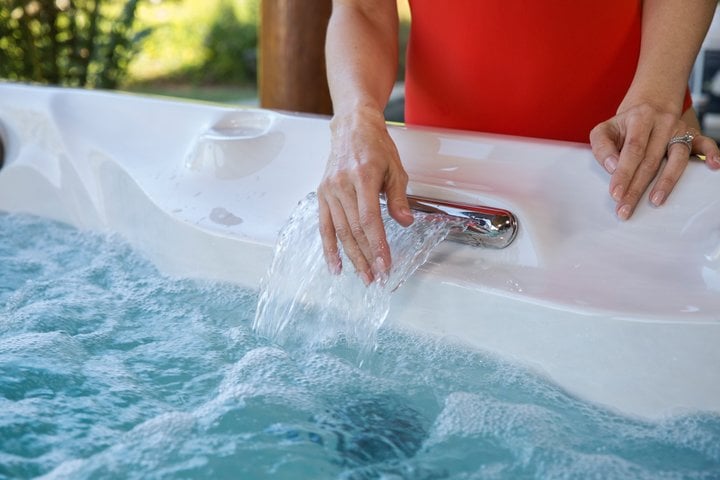

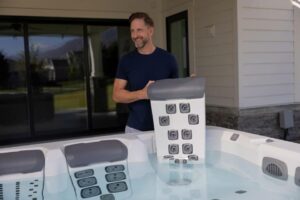
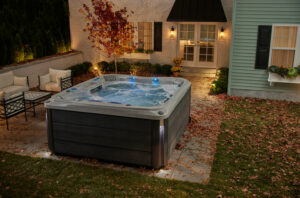
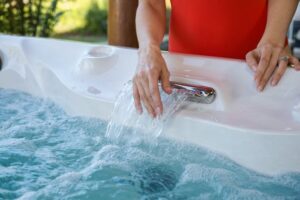
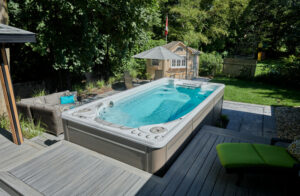
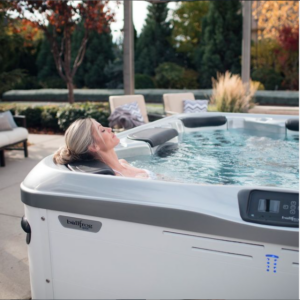
 by
by 
